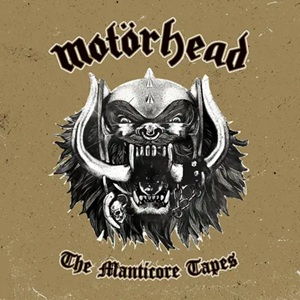
The Manticore Tapes Capture the Birth of Motörhead’s Classic Lineup
It seems the Motörhead recording archives are bottomless. After numerous compilations, live recordings and unreleased versions, the so-called “lost album,” The Manticore Tapes, has now received an official release. The record documents the early days of the band’s classic lineup.
Motörhead recorded their debut already at the turn of 1975/1976. However, their label, United Artists, didn’t see commercial potential in the material and postponed the release of On Parole. After a few lineup changes, the band eventually solidified as the trio of Lemmy, Eddie Clarke and Phil Taylor. In the summer of 1976, these three found themselves in Manticore Studios in Fulham, where they recorded together for the very first time. And it’s these sessions that are captured on The Manticore Tapes.
The material naturally draws from tracks that would later appear on On Parole and the album released a year later (featuring Clarke and Taylor). Here, the songs gradually start taking on the trademark Motörhead sound, and many versions are notably faster than those found on On Parole. One clear example is the Eddie Holland classic "Leavin’ Here". Lemmy’s bass is much more prominent, and combined with Clarke’s guitar and Philthy Animal Taylor’s frantic drumming, it becomes clear why fans would soon fall in love with the band.
"The Vibrator" already sounds much sharper and serves as a reminder that Motörhead were, above all, a rock ’n’ roll band! In "Keep Us on the Road", it’s a joy to hear Eddie Clarke’s excellent solo in the raw version.
Naturally, there are also tracks Lemmy brought over from his time with Hawkwind – namely "The Watcher" and the iconic "Motörhead". The former stands out compared to later versions: the guitar has more of a bluesy feel and Lemmy’s bassline is more straightforward. On the other hand, "Motörhead" is already close to the version released on the band’s 1977 album, delivered with the unmistakable primal energy that would become their signature.
What will you appreciate about the record as musicians?
Considering it's essentially a demo, the recording has a clean, clear and lively sound. In the cover version of Mayall’s banger "Witch Doctor" and later in "Iron Horse/Born To Lose", the vocals are subdued and almost inaudible, but that actually allows the listener to enjoy the musical side even more. You can hear the great chemistry between the musicians and how, slowly, the beast is being born – the one that will go on to gift the world with immortal albums like Overkill and Bomber in the coming years.
Archival releases from Motörhead are never boring and The Manticore Tapes is no exception. It definitely deserves an important place in every fan’s collection of this British legend.

Motörhead – The Manticore Tapes
Sanctuary, 00:47:12
70 %
If you have found an error or typo in the article, please let us know by e-mail info@insounder.org.




